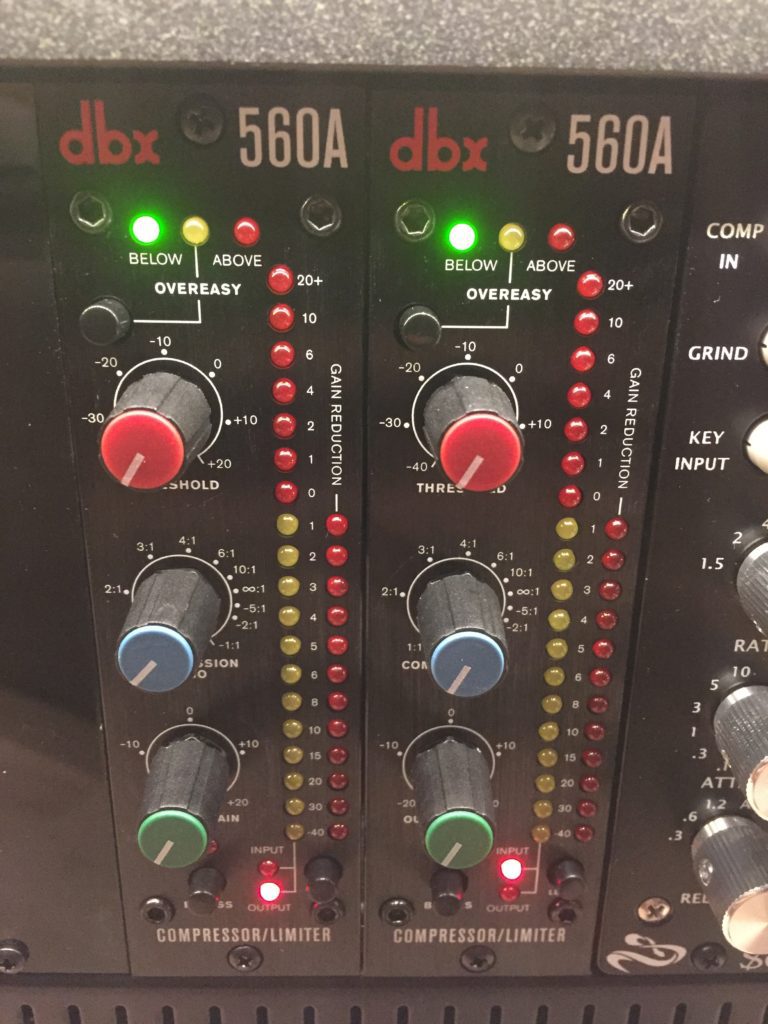Turning away from the DIY world for a moment, recently we added a studio classic to our dynamics arsenal. Two of them, actually, because at $150 each, picking up a pair was an absolute no-brainer.
The dbx 560A is the updated, “500 Series” version of the famous dbx 160 compressor. dbx’s founder, David Blackmer, was best known for his VCA (voltage-controlled amplifier) circuit designs. The original dbx 160, introduced in 1976, was the company’s first compressor and remains one of the most famous VCA-based compressors ever made.

In designing a compressor circuit, one of the biggest considerations is the speed of the gain reduction circuit. I talked about this a little in my post about the FET/500 units I’ve been building. In early compressor designs, the gain reduction circuit was fairly slow, meaning that the transient, or “spike” at the beginning of an audio signal would often pass through the circuit without being acted upon. That’s useful in certain circumstances, but there are other times where you really need to aggressively clamp down on a signal, and in those situations, speed matters. The FET-based 1176LN Peak Limiter was one solution to this problem; VCA-based designs like the dbx 160 were another. Both styles are plenty fast for instruments with strong transients, like drums and bass, but the “color” offered by the circuitry associated with each is different. The goal is to provide gain reduction in a way that stays “musical” — where the gain reduction works in a manner that’s either transparent, or, if you CAN hear the compressor working, where it doesn’t suck all the life out of the sound.
The original dbx 160, introduced in 1976, did a great job clamping down ridiculously hard on just about anything that was fed through it, and yet it did it in a way where the “musicality” of the signal didn’t suffer. dbx updated the line several times throughout the years, and the current production units are known as the dbx 160A. The later models added attack and release controls, and other new features that made the later units more suitable to the needs of a world where digital audio is the standard. In tape-based analog recording, when you overload the input signal, the system moves “into the red” in a more graceful way. In an analog system, a little distortion brings a warm, round saturation to the signal that can actually be desirable in certain situations. In digital systems, when the red clipping light goes on, the signal literally “hits the roof” and immediately suffers. Hence the redesign of the dbx 160 — the later models are better equipped for a digital world, where input signals must be kept out of the red at all costs.

So the dbx 160 and its successor, the 160A, have a long, distinguished history in studios around the world. The dbx 560A is the 500-series version of the 160A. We’re glad to add them to our rack to give us another set of flavors in our compression toolbox.
And at $150 each, we had to get two. That’s a screamin’ deal.
In Other News…
Following up on my earlier post, I have now completed the other three FET/500 kits I’ve been working on!

So we now have four channels of 1176-style compression available. They will come in very handy on all sorts of projects and we expect to get a LOT of use out of them!


